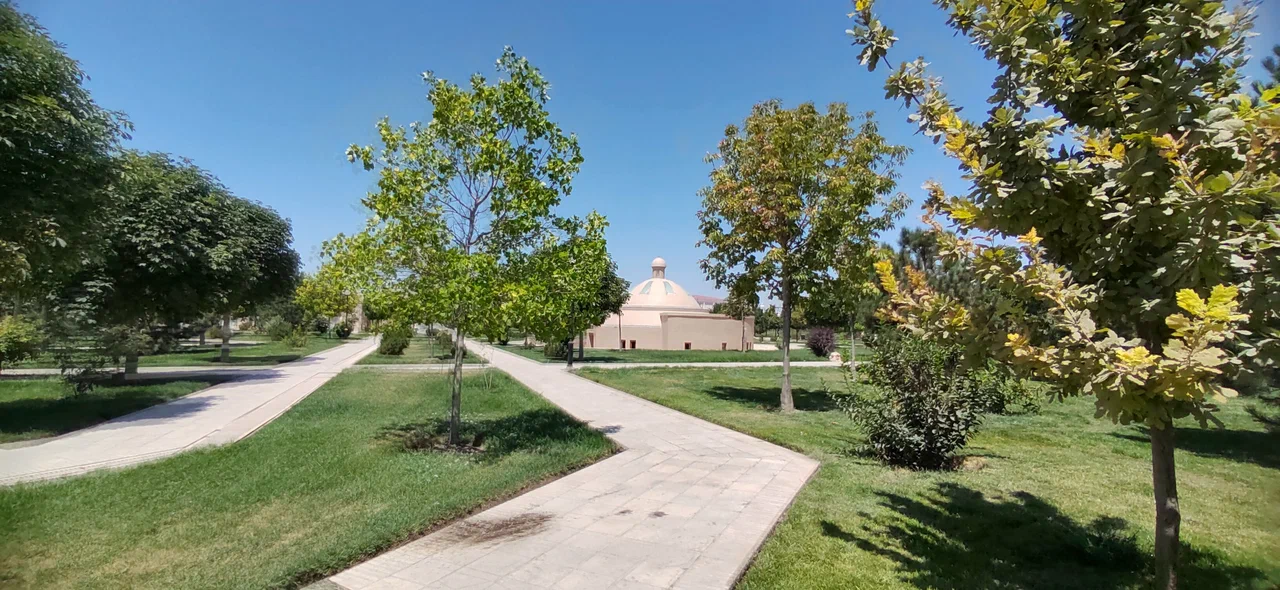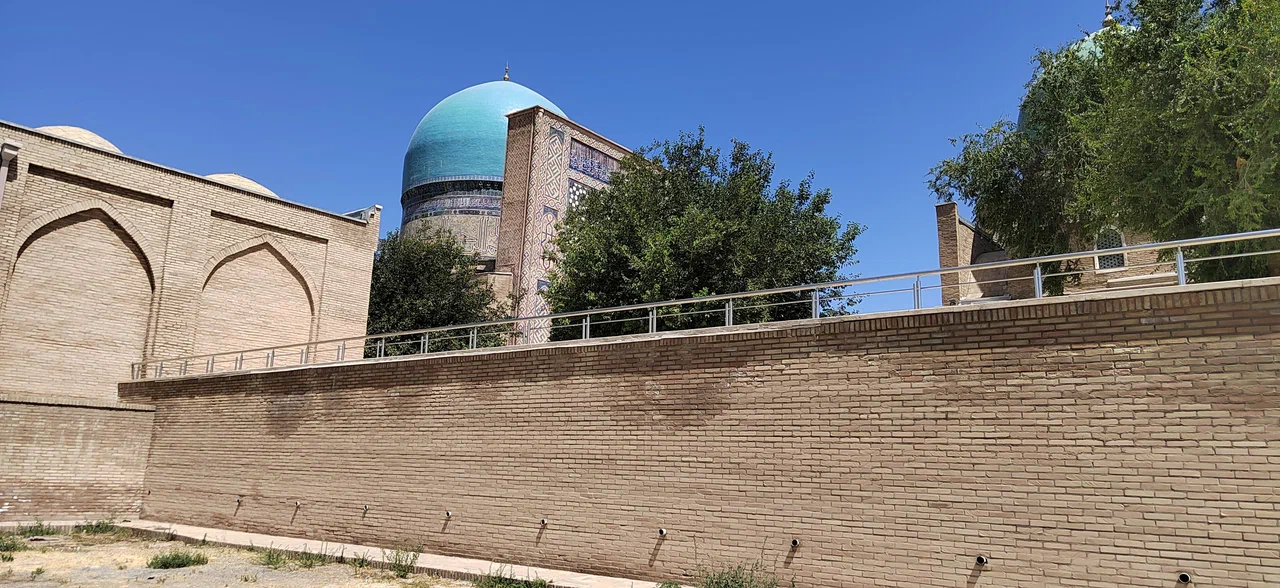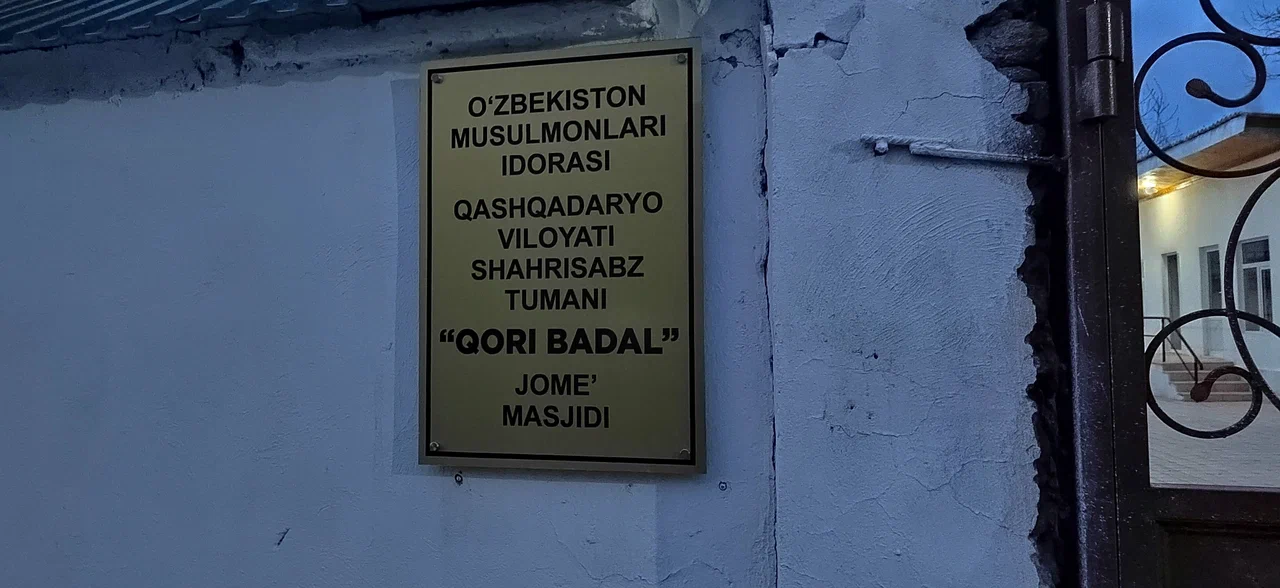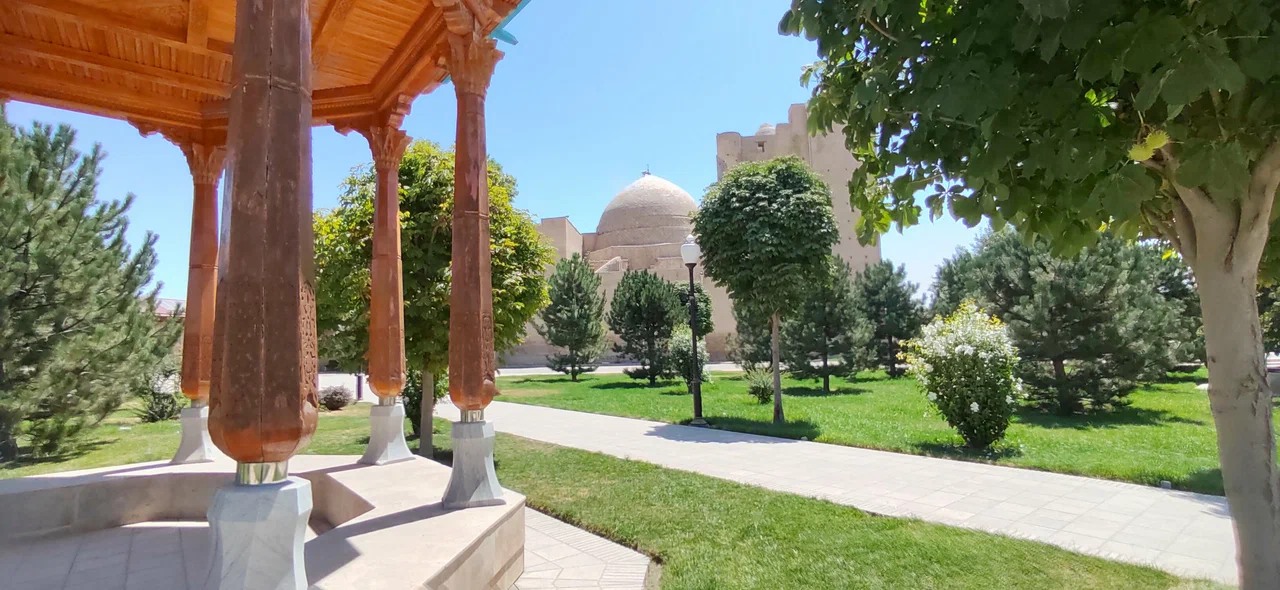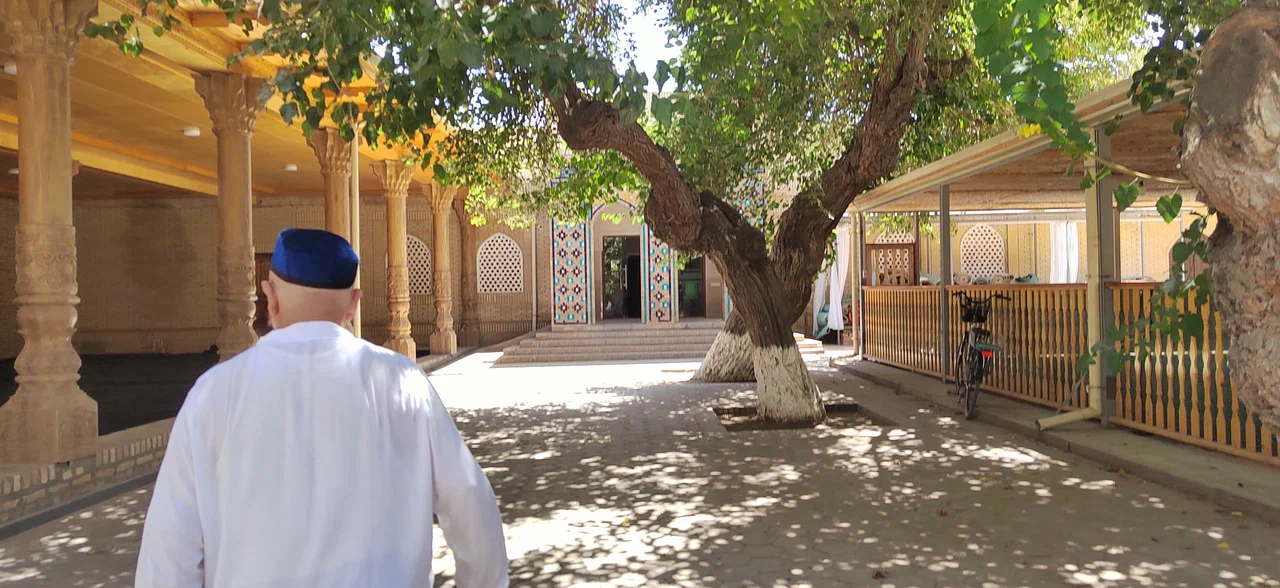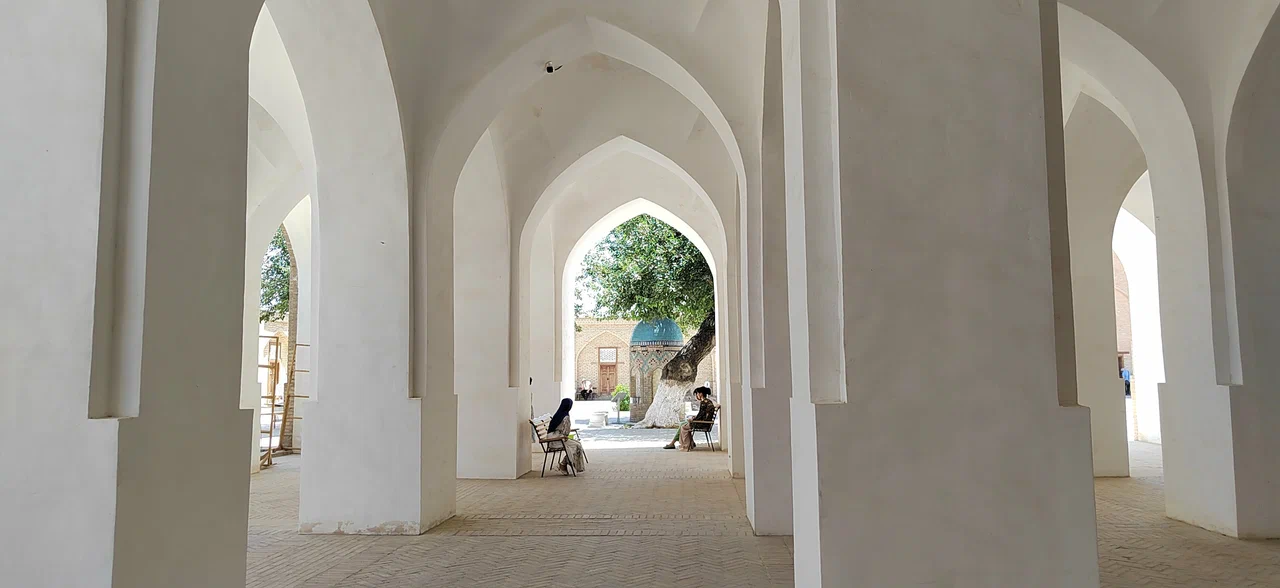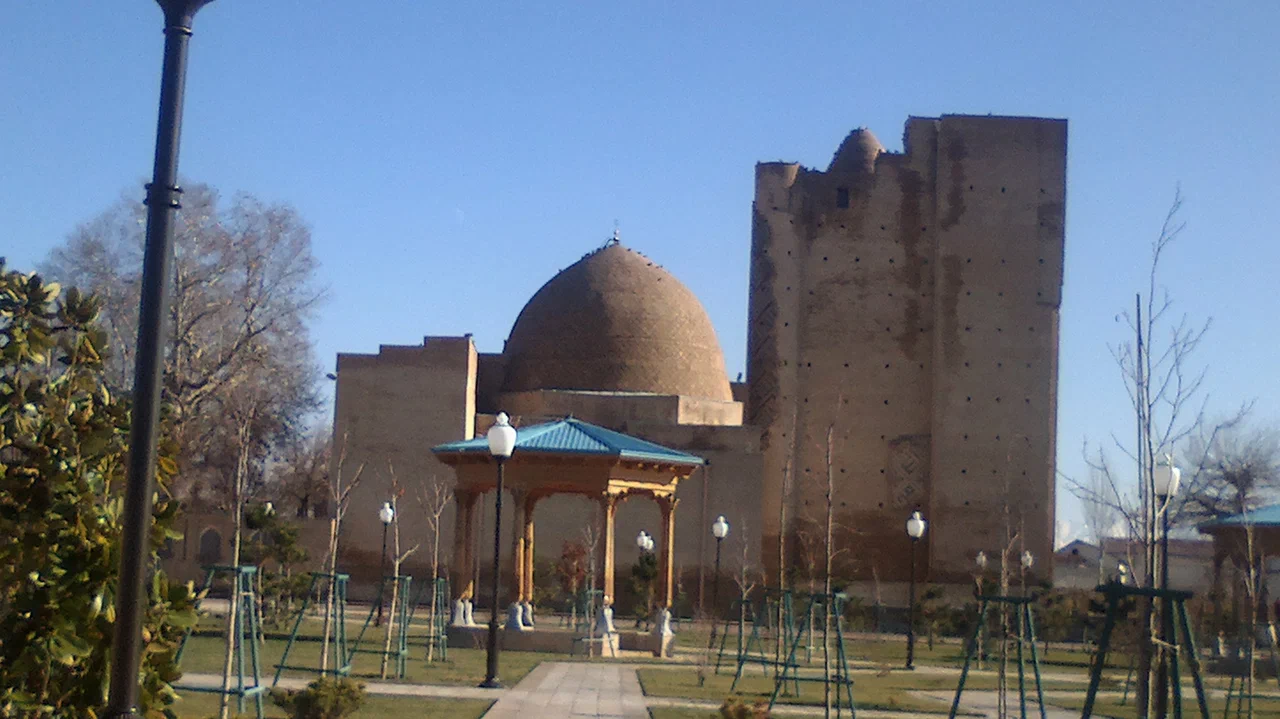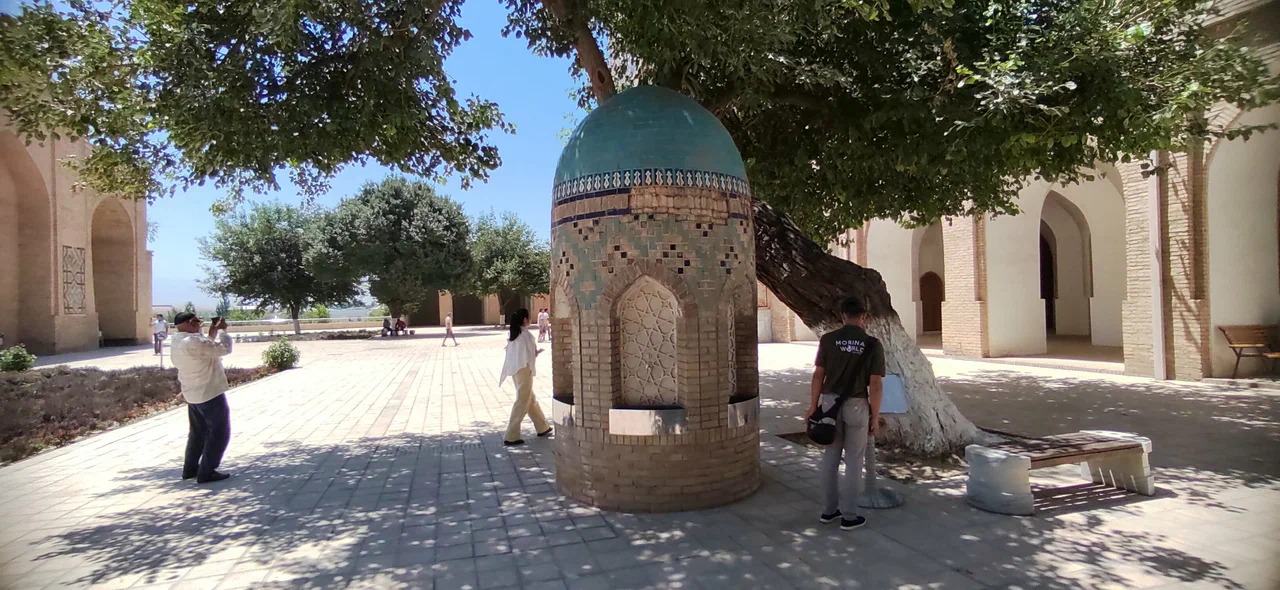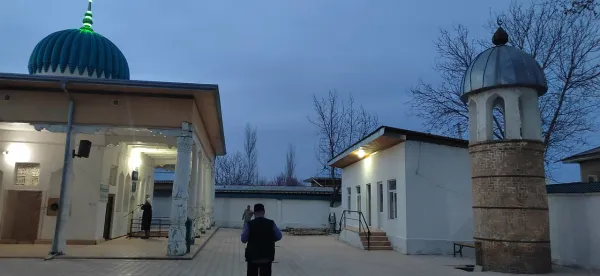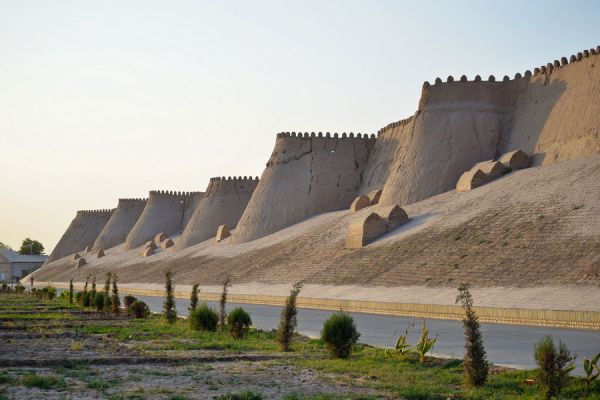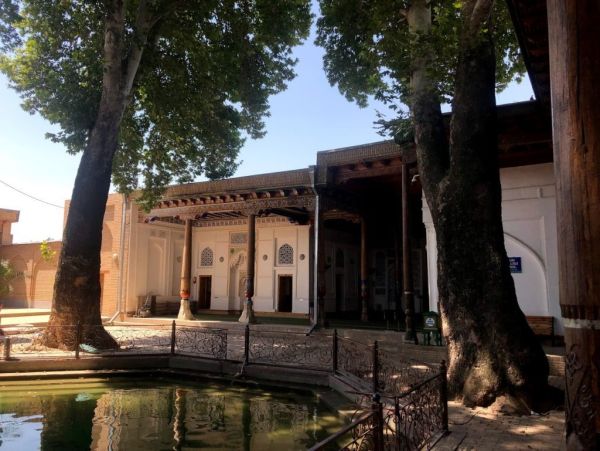The Mausoleum of Hazrat Imam
Next to the Dorus-Saodat memorial complex, another monumental building of the Temurid period has been preserved to this day – the mausoleum of Hazrat Imam.
Imam Muhammad Bin Hussein Shaibani, nicknamed Hazrat (Saint) Imam Baghdadi lived in Iraq in the 13th – early 14th century and was buried in the city of Rhea after his death. Amir Temur occupied Rey in 1384 without a fight and probably transported the remains of the saint to Shakhrisabz, but no historical information has been preserved about this. Nevertheless, the northwestern tomb of the Dorus-Saodat complex was popularly called the mausoleum of Hazrat Imam– the "Great Imam."
There was obviously a building on the site of the Mausoleum of Hazrat Imam, which was subsequently destroyed, and the mausoleum turned out to be embedded in the powerful structures of the corner pylon. The conical shapes of the tent dome, drum and other architectural details of the mausoleum clearly indicate the participation of architects and craftsmen from Khorezm in its construction. The main facade of the mausoleum, decorated with a huge pylon, is oriented to the west, towards the Dorut Tillawat ensemble. The pylon is covered with a mosaic of glazed bricks. The most notable feature of this structure is its covering, consisting of three domes. The inner, decorative dome is decorated with ganch stalactites, above it is a structural dome supported by arched sails, and the third, tent dome, supported by a faceted drum, rises to a height of 27 meters. The entire eastern part of the mausoleum has preserved clear traces of two-storey extensions and extensions of the walls, indicating that these are the ruins of an intact structure.
Through the door pierced in the eastern niche, you can get inside the mausoleum. In a small but very high room there is a tombstone-sagan. There is a prayer niche – mihrab - on the western wall.
The northern facade of the mausoleum, decorated with painted majolica, faces the vast courtyard, where later, in the middle of the 19th century, the domed mosque of Hazrat Imam was erected close to the wall of the tomb. From here, the corner entrance leads to ziarathona. A tall painted ivan with carved wooden columns was attached to the northern wall of the mausoleum. It is now a functioning mosque, where daily services are held, as well as prayers for the repose of the souls of the great ancestors resting in the mausoleum.
